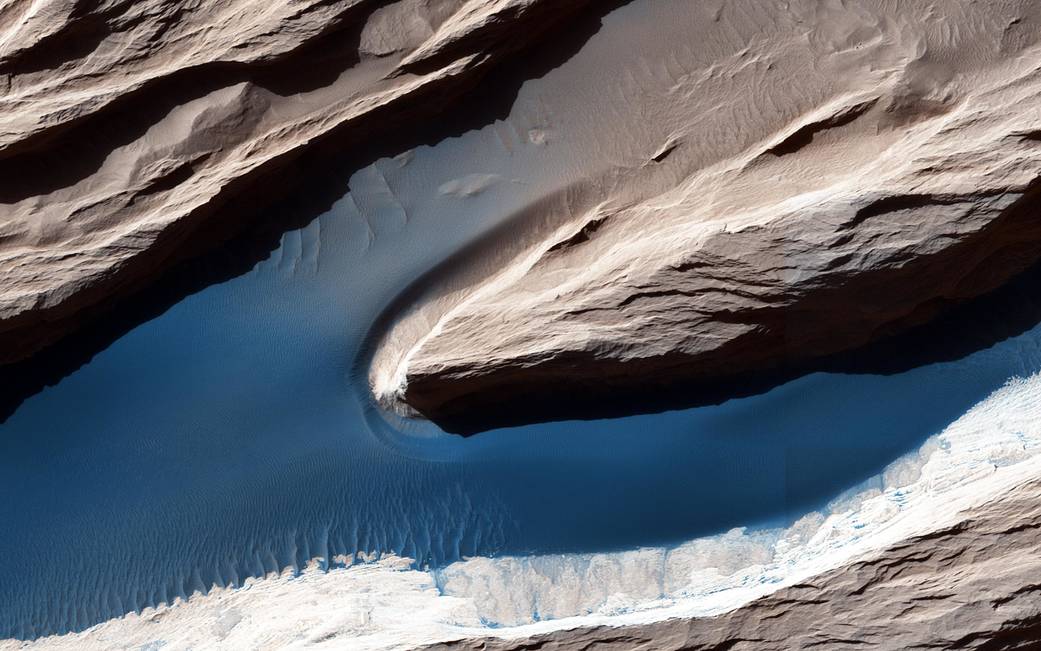Wind is one of the most active forces shaping Mars’ surface in today’s climate. The wind has carved the features we call “yardangs,” one of many in this scene, and deposited sand on the floor of shallow channels between them. On the sand, the wind forms ripples and small dunes. In Mars’ thin atmosphere, light is not scattered much, so the shadows cast by the yardangs are sharp and dark.
This image was acquired by the High Resolution Imaging Science Experiment (HiRISE) camera aboard NASA’s Mars Reconnaissance Orbiter on Dec. 15, 2015, at 3:05 p.m. local Mars time.
The University of Arizona, Tucson, operates HiRISE, which was built by Ball Aerospace & Technologies Corp., Boulder, Colo. NASA’s Jet Propulsion Laboratory, a division of the California Institute of Technology in Pasadena, manages the Mars Reconnaissance Orbiter Project for NASA’s Science Mission Directorate, Washington.
More information and image products
Image Credit: NASA/JPL-Caltech/Univ. of Arizona
Caption: Candy Hansen





























